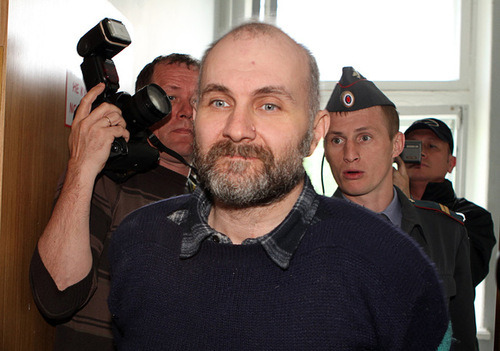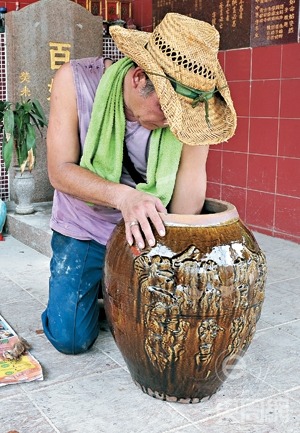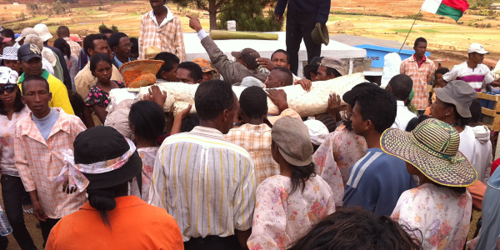Exhumation, the act of digging up the buried corpses.
Forensic experts, especially forensic anthropologists are those who may request an exhumation for further analysis. Reasons usually include: incorrect I.D. of the deceased, incomplete “tox screen”, or improper wound analysis. This type of exhumation should go through normal and legal protocol before investigation begins.
Yet, exhumation can also be done illegally–when a bodysnatcher, grave robber visit the grave; or exhumation can be done because of mortuary ritual and culture (like in Madagascar, Hong Kong, and Taiwan)
Why don’t we begin with the exciting, but crazy illegal bodysnatcher case?
In October 2014, a grieving mother, Natalia Chardymova spoke about the evil bodysnatcher arrested 3 years ago for digging up 29 young girls from their graves, turned them into life-size dolls, and have them accompanied at his home. Ten-year-old Olga, daughter of Natalia Chardymova was one of the dolls found in the bodysnatcher, Anatoly Moskvin place.

Anatoly Moskvin (Source:http://old.looo.ch/2013-02/838-moskvin)
Anatoly Moskvin, a well-known historian in the Russia academia ransacked graveyards and kept dozens of corpses of young girls in his bedroom. He dressed the mummified young girls’ bodies in stockings, girl’s clothing, knee length boots, even applying lipsticks and make-up to their faces. He also put music boxes into their rib cage. He told the parents of the girls while he was being arrested, “you abandoned your girls in the cold, and I brought them home and warmed them up.”
Olga was murdered when she was 10. She said she was big enough to go her granny’s apartment on her own before she got killed. Chardymova, mother of Olga remembered the crazy notes she found, signed with D.A.–Dorby Angel or Kind Angel Moskvin would call himself in front of Olga’s grave. She says he would carefully count her grades, public holidays as if she is still alive. He eventually threatened the parents of Olga saying if they do not take care of her probably, he [they] would dig her body out.

Ten-year-old Olga (left) and her remains as a doll (right). (Source: husinisme.blogspot.hk)
No crime is charged against Moskvin, but has locked up in an asylum since then. Out of the investigation, media reported that he has singled out the Muslim graves. Even though he is claimed and declared to be mentally ill, he to certain extents is still having a clear and rational mind, given that he showed his perspective and take on religion or culture.
It is sick. Though it is a crime and disrespectful to the family, to Moskvin, it is a desceration no other than the exhumation, or “digging up bones” (揀骨 in Taiwan, or 執骨 in Hong Kong), or Famadihana in Madagascar.
Every culture and every society has its own way to mourn and has its own customs to remember the deceased.
Taiwan and Hong Kong: Digging up bones
In Hong Kong and Taiwanese culture, the re-burial is called “digging up bones.” These rituals adapted not only in the above mentioned two places, but in fact are relatively common in Southern Chinese cultures. In Taiwan, the phrase “jiangu” also carries the meaning of “jianjin”, or “digging up gold”, which shows the value of ancestor worship and respect in their culture. Back in the days, this ritual linked to the migration culture, which allows people bring their ancestors’ remains back to the origin or diaspora for burial.
Both culture share the same taboos: Deceased who were under 16 years of age by the time he or she expired is not eligible for having the this ritual.
Pregnant women are not eligible to be part of this ritual.
Each “digging the bones” should be carried out 6 to 10 years after first burial.The bones would be removed from the coffin, cleaned dried and placed in a ceramic pot for reburial. The way to put in the pot is also very specific. It basically have to arrange the remains in a sitting position, and anatomically. All the bones from hand and feet, as well as teeth if any, would be removed and put into a bag, before putting inside the pot. All 206 bones have to be picked and stored, or it would affect the reincarnation of the deceased and the families. If the remains due to environmental factors are not entirely skeletonized, then maceration may needed.

Putting cleaned bones in the ceramic pot. (Source: Eastweek Hong Kong)
Famadihana: Dancing with the corpses in Madagascar
On the contrary of the darkened and saddening feel of the “digging the bones” rituals in the Southern Chinese culture, Madagascar’s Famadihana is more festive.

Famadihana. (Source: mywanderlist.com)
Family members would dig up the remains, and dance with them. Their belief is the dead would sometimes travel back to the living world. In the ceremony, “the ancestors can join the living to indulge into the worldly desires” ( It is again a ritual that practices every seven years. Yet, it is considered as a taboo for the younger generation, and the practice is dying out. “We do not believe we can communicate with the dead, but we do believe the famadihana strengthens our family between the generations,” Jean Jacques Ratoboherison says (Bearak).
In this generation however, these practices are dying, and the idea of exhumation still remains as a taboo. In Hong Kong and Taiwan, due to the constraints of land, most of the people now choose to cremate the corpse directly and have the ashes stored. In Madagascar, the younger generation consider this practice as a taboo, as well as a black magic. Or, just a sheer waste of money.
But if you look deeply, the whole exhumation, regardless the crime of Moskvin, or these cultural exhumation means more to the families than any others. “Exhumation,” quoting one of the interviewees from Bearak, “is a time when families show they love each other.”
“The voices of the dead are inserted in dreams or riding in the wind.”
For my grandfathers.
References/ Further information:
Anatoly Moskvin and dolls
BBC News. 2011. “Russian ‘grave robber made dolls from girls’ corpses.”
Readhead, Harry. 2014. “Grave robber dug up 29 girls and turned them into human dolls.” Metro.co.uk.
Famadihana
Bearak, Barry. 2010. “Dead Join the Living in a Family Celebration.” the New York Times.
My Wander List.com. Famadihana, Madagascar: Dancing WIth Corpses and Turning Bones.
“Digging the Bones” (Only Chinese Version)